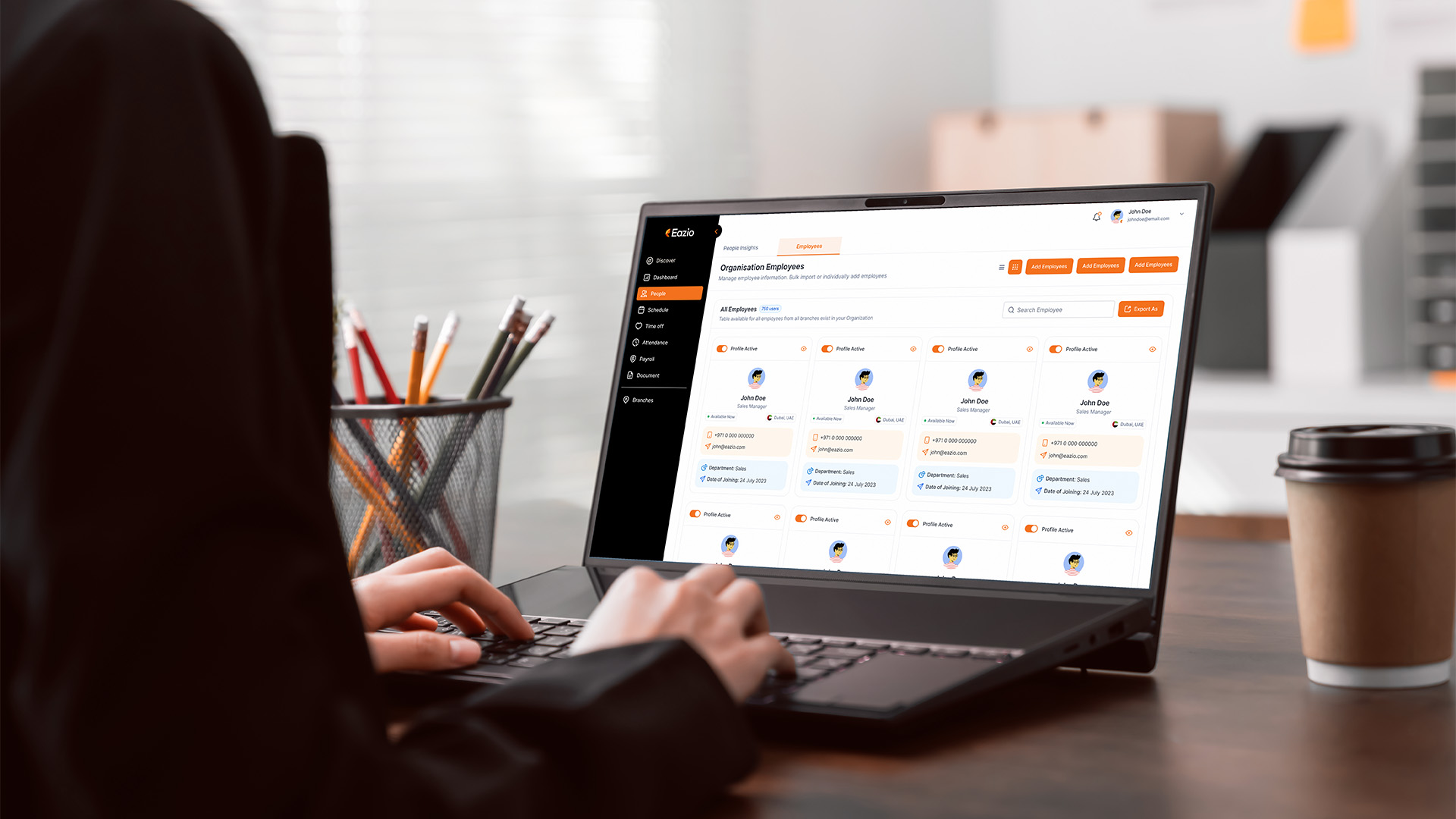Managing employee records effectively is a critical aspect of HR operations. These records represent a comprehensive view of an employee’s journey within an organisation, from hiring to exit.
However, without a robust HRMS in place, handling employee records can be a logistical nightmare. The absence of proper systems increases the likelihood of errors, inefficiencies, and compliance risks.
This blog explores the blunders that can arise from poor employee record management and highlights the key features to look for in an HRMS
Possibilities of Blunders Without a Proper HRMS
1. Data Inaccuracy & Errors
Without an HRMS, employee records are often stored in spreadsheets, paper files, or scattered digital documents. This decentralisation can lead to several errors, such as:
- Mistakes in payroll processing due to outdated information.
- Errors in tracking employee benefits or leave balances.
- Incorrect personal details such as addresses or contact numbers, causing communication issues.
2. Difficulty in Accessing Records
Relying on manual systems makes retrieving records time-consuming. For example, finding an employee’s leave history or performance review from two years ago could mean digging through stacks of files or multiple folders, resulting in slow down decision-making and frustration for both HR and employees.
3. Non-Compliance Risks
Compliance with labour laws and regulations often requires maintaining up-to-date employee records. Without an HRMS, tracking mandatory information such as contract details, tax records, or training certifications becomes a challenge.
You don’t want to end up paying hefty fines or legal penalties nor risk damaging your company’s reputation.
4. Employee Dissatisfaction
Employees expect quick access to their information, such as pay slips or leave balances. A lack of a proper system can lead to delays in responding to employee queries, causing dissatisfaction and disengagement.
5. Security Breaches
Storing employee data in unsecured systems or physical files increases the risk of data breaches. Sensitive information like salaries, performance reviews, and medical records can easily fall into the wrong hands without proper controls.
6. Inefficient Onboarding
Manual onboarding processes often involve redundant paperwork and disorganised data collection which delays the process and creates a negative first impression for new hires.
7. Limited Scalability
As businesses grow, managing employee records manually becomes complex. Adding new employees or updating records for a larger workforce strains manual systems and leads to burnout for HR teams.
8. Inconsistent Record-Keeping
Without a centralised HRMS, record-keeping practices may vary between teams or departments, leading to discrepancies and misaligned information.
But with an HRMS, you can avoid these issues by digitally storing employee records. Here is how to find a good HRMS for your business.
Features to Look for in an HRMS for Employee Record Management
To avoid these blunders, investing in an HRMS designed to streamline employee record management is crucial.
1. Centralised Data Repository
An HRMS should act as a single source of information, storing all employee information in one secure location. Centralisation ensures data accuracy and makes it easy to retrieve information when needed.
2. Self-Service Portals
Allow employees to access their records, update personal details, and download documents like pay slips or tax forms. This reduces the administrative burden on HR teams and empowers employees.
3. Automated Record Updates
Choose an HRMS that automatically updates records based on actions such as promotions, transfers, or leave approvals. Automation eliminates manual errors and keeps data up to date.
4. Compliance Management
Look for features that help you stay compliant with labour laws and regulations, such as:
- Tracking mandatory employee documentation.
- Generating compliance reports.
- Sending reminders for expiring contracts or certifications.
5. Data Security & Access Controls
Ensure the HRMS has robust security measures, including encryption and role-based access controls. This protects sensitive data and ensures only authorised personnel can access specific records.
6. Customisable Templates
An HRMS with customisable forms and templates simplifies data collection and ensures consistency across departments. For example, you can standardise forms for onboarding, performance reviews, and exit interviews.
7. Integration with Other Systems
Integration with payroll, attendance, and performance management systems ensures seamless data flow and eliminates the need for duplicate data entry.
8. Search & Reporting Tools
A good HRMS should offer advanced search functionality to quickly locate records. Also, it should provide reporting tools to analyse employee data, such as turnover trends or skill gaps.
9. Scalability
As your organisation grows, the HRMS should be able to handle increased data volume and complexity without performance issues.
10. Mobile Access
A mobile-friendly HRMS allows employees and HR teams to access records on the go, enhancing convenience and flexibility. Look for an HRMS with a web portal as well as a mobile app, like Eazio.
An HRMS like Eazio is designed to eliminate the chaos of manual employee record management. With features like automated updates, compliance tracking, and secure data storage, Eazio simplifies HR operations while enhancing data accuracy and accessibility. Its self-service portal empowers employees, reducing the HR team’s workload and improving overall satisfaction.
Managing employee records manually may seem manageable in the short term, but as your organisation grows, the risks and inefficiencies will only multiply. A robust HRMS soon becomes a need for businesses, no matter the size of the businesses.
By investing in the right system, you can avoid costly blunders and create a streamlined, scalable, and secure HR process that benefits employees and the organisation alike.
Whether you are dealing with compliance challenges, data inaccuracies, or inefficiencies, the right HRMS can transform how you manage your workforce, leaving you more time to focus on strategic initiatives.
Make the switch today and see how a modern HRMS can revolutionise your employee record management!
- admin
5 min
Frequently Asked Questions - FAQs
What are the benefits of a cloud-based solution?
How does a cloud-based solution benefit you?
Does Eazio comply with all UAE payroll and labour laws?
Is it possible to test Eazio before deciding whether to use it?
Absolutely! Once you’ve signed up, a team member will contact you to set up your account.
Does Eazio have a mobile application?
Yes, Eazio does have a mobile application.
Can Eazio be integrated with other systems?
Yes, of course! You can integrate Eazio natively with virtually any cloud service.
Let's Connect!
We would love to discuss your HR needs.
Related blogs

The Future of Work: How HR Tech is Shaping Tomorrow’s Workforce
5 min
admin
May 22, 2025


